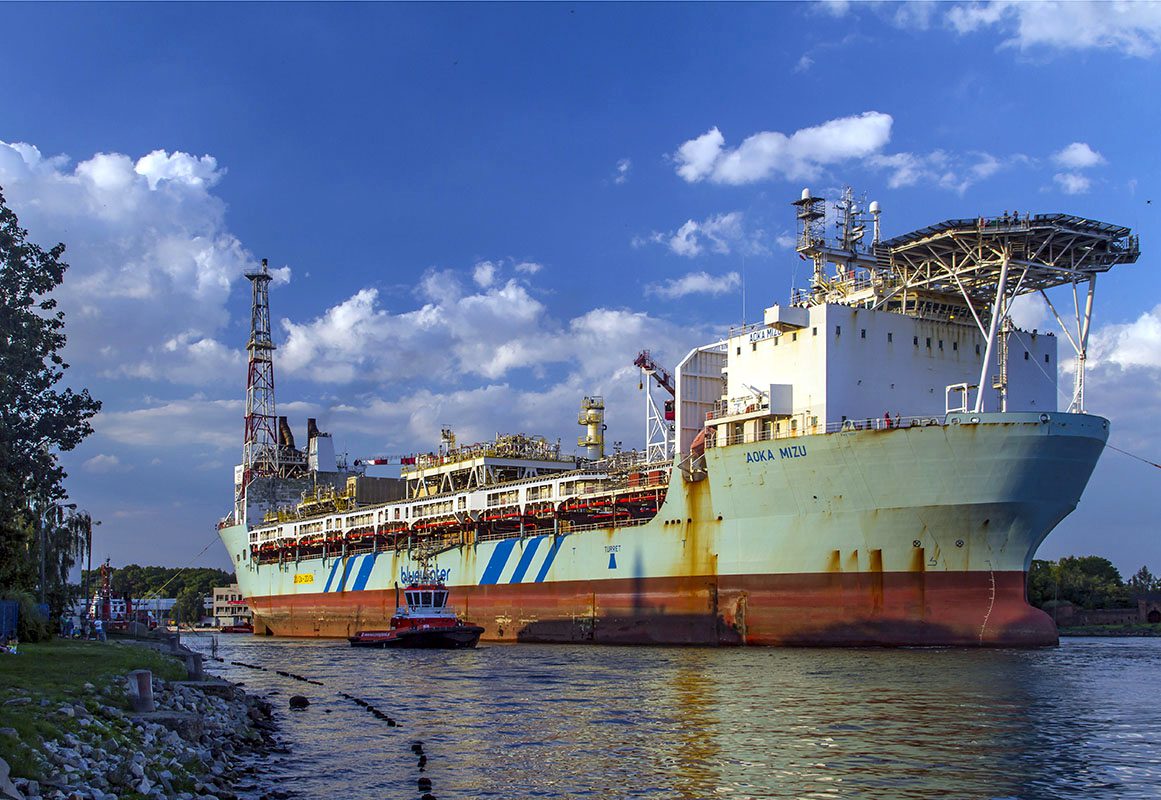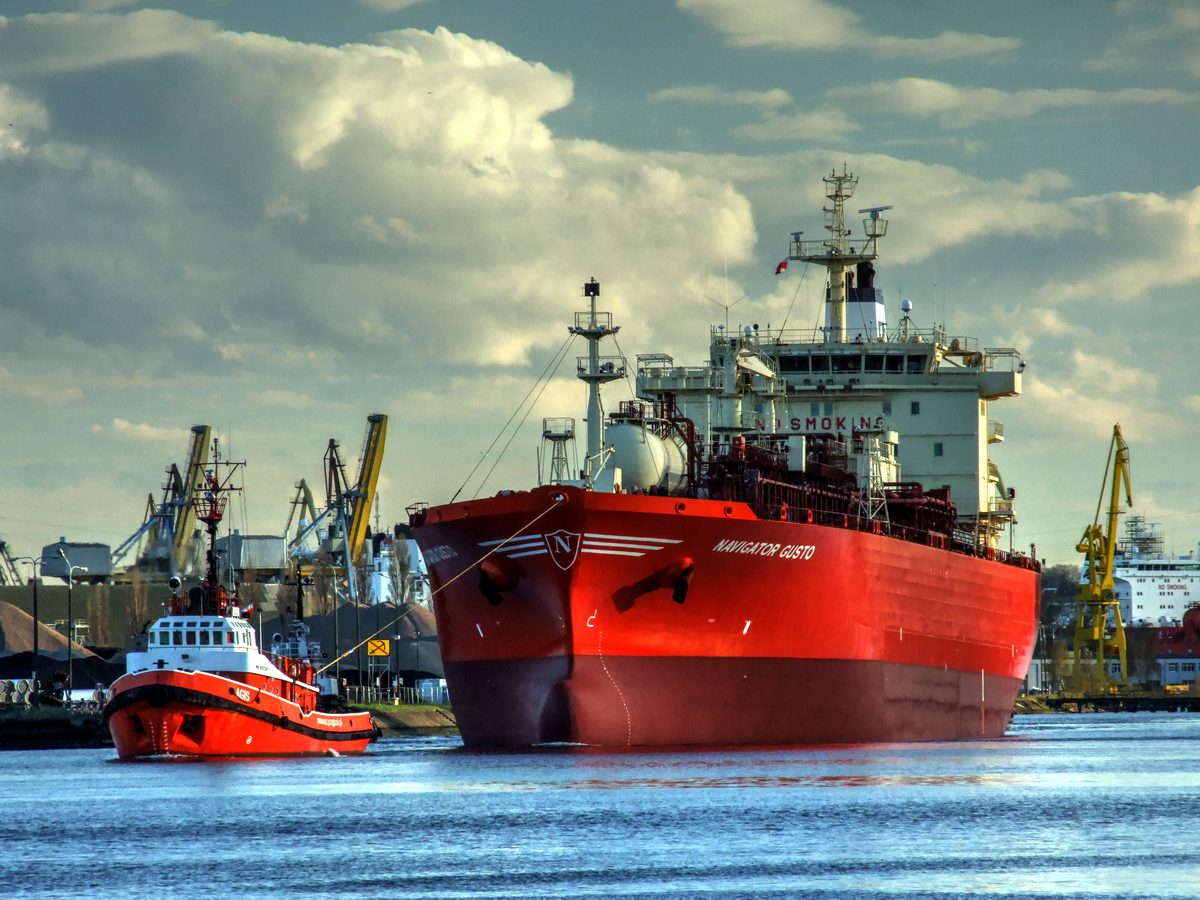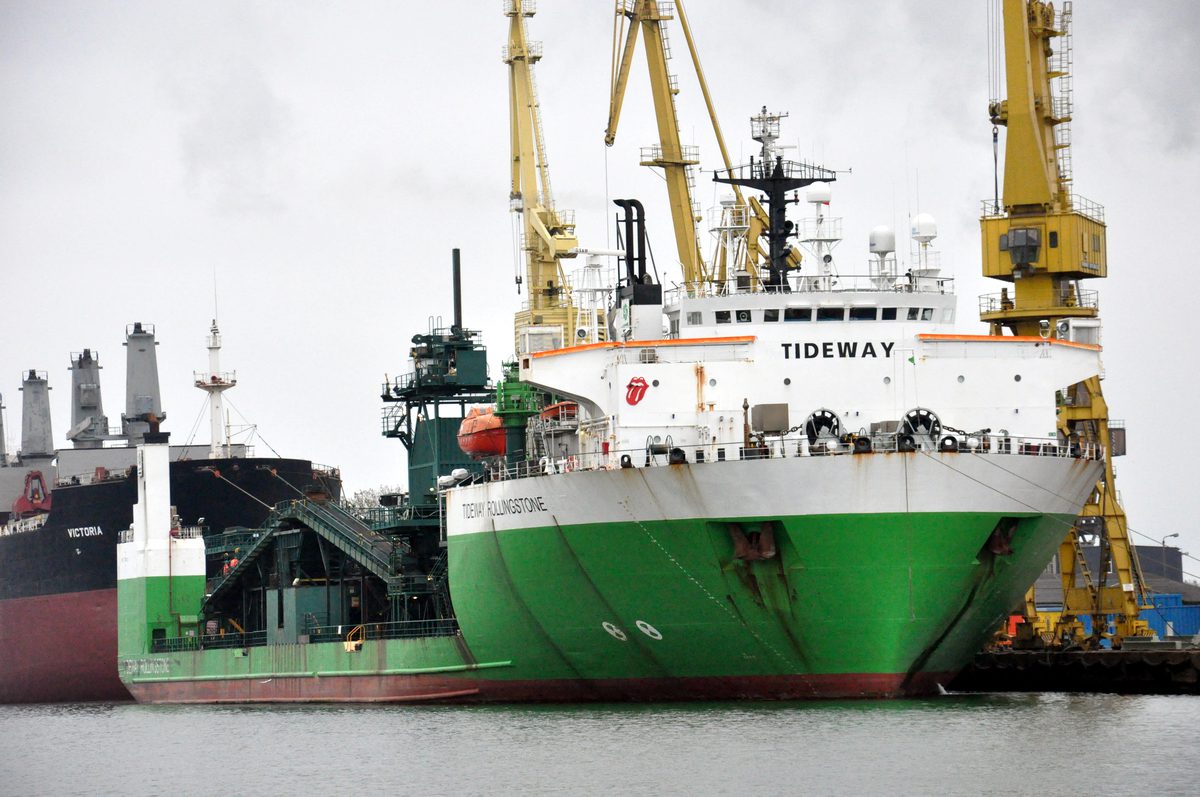Semi-sub upgraded at Remontowa receives DNV GL’s first offshore drone survey
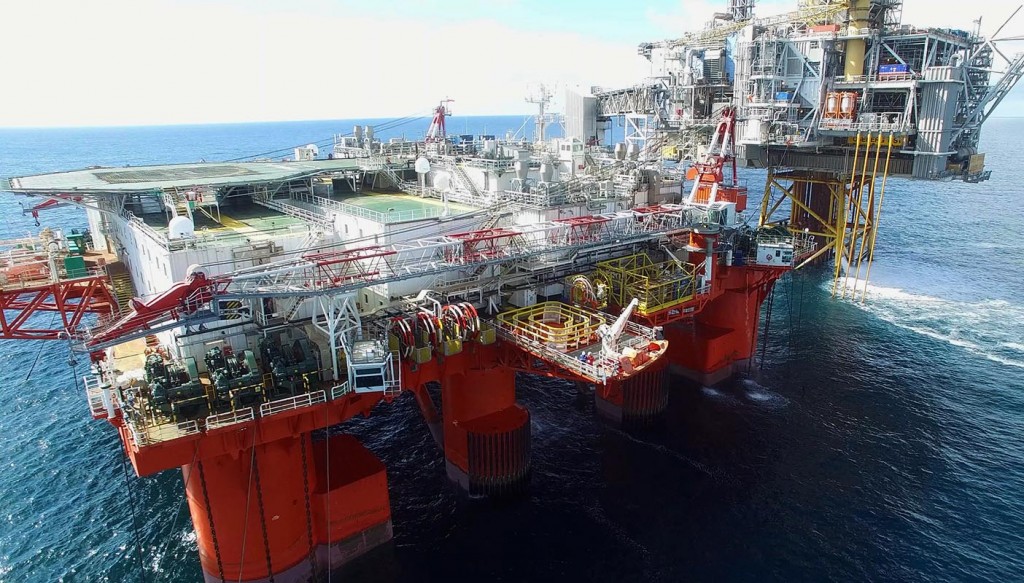
DNV GL surveyors have carried out the classification society’s first offshore drone survey on the semisubmersible vessel Safe Scandinavia in the North Sea. This 25,383 GT tender support vessel (TSV) is owned and operated by Prosafe, supporting Statoil’s drilling operations off the coast of Norway. Using camera-equipped drones, DNV GL’s drone pilots checked the TSV’s fairleads and their connection with the vessel’s two columns as part of the intermediate survey.
“Innovation is one of Prosafe’s core values. We are very pleased that we chose to try the drone survey, as it helped us optimize our survey requirements and allowed us to save significant amounts of time and money. Normally, this kind of operation would cause disruption to our client for several days. The drone survey took only a few hours and was just as effective,” says Ian Young, Chief Operating Officer at Prosafe.
Prosafe is a leading owner and operator of semi-submersible accommodation vessels. Prosafe owns/operates eight semi-submersible accommodation, safety and support vessels and one tender support vessel (TSV) that is providing drilling support services on the NCS – a fleet, that consists of a combination of dynamically positioned and anchored vessels..
“This was a great opportunity for us to demonstrate our drones’ abilities to check the condition of remote external components in challenging offshore conditions. The inspection only required the semi-submersible to de-ballast, then we flew the drone approximately 25 metres below the main deck to check the condition of the fairleads and their connections to the columns that hold up the TSV. With wind speeds of approximately 15 knots, this went very well and the survey showed that the fairleads and their connections were in a good condition,” explains Cezary Galinski, Project Manager Classification Poland at DNV GL.
The classification society has carried out multiple drone surveys on both ships and offshore units, inspecting many areas on board, ranging from tanks and cargo holds to external structures such as jack-up legs. The inspection of such spaces can be both costly and time consuming, and even in some instances potentially dangerous. Using drones to visually check the condition of remote structural components can significantly reduce survey times and staging costs, while at the same time improving surveyor safety.
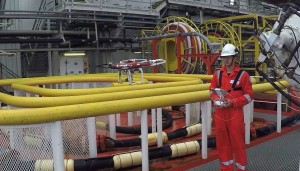
DNV GL has built a network of trained drone pilots based in Gdynia, Piraeus, Singapore, Houston and Shanghai. This allows drone survey inspections to be offered from any of these hubs. At the same time, DNV GL is developing guidelines and updating our rule set to reflect the use of remote inspection techniques.
It is an interesting circumstance, that DNV GL’s first attempts and early development of the technology, as far as drone inspections are concerned, took place at Remontowa SA, too.
In January 2016 DNV GL announced it had completed several tests using drones to support the hull survey of two vessels. Conducted by the classification team based in Gdansk, Poland, the tests took place at the Remontowa Shiprepair Yard – as revealed in DNV GL’s news release.
More: DNV GL tests drone technology for inspections of tankers
Safe Scandinavia itself also happens to be the offshore mobile unit to be refurbished and upgraded at Remontowa SA shiprepair yard in Gdansk, Poland.
The Prosafe operated accommodation and workshop unit (or tender support vessel) arrived to Remontowa SA late November 2013, to undergo repairs, maintenance and upgrade. It was actually the fourth unit serviced by Remontowa for Prosafe, with the previous being: Safe Caledonia, Safe Esbjerg and Safe Bristolia.
The focus and aims of the project were, amongst others, to increase her mooring capability (by replacing 12 mooring winches and anchor cables), replace the original deck cranes and refurbish the cabins. Berth cabin modules have been replaced with new ones, hulls and columns maintenance and painting have been performed with the unit lifted up on the shipyard’s own heavy-lift barge REM Lift 25 000. As most of the extensive range of works, mentioned above, had been completed – the undocking of the unit went smoothly on a fine, sunny day of March 8, 2014.
However, the platform didn’t depart from the yard immediately afterwards. The completion of repair and upgrade works were on the agenda after undocking, not to mention test-runs and activation of the unit’s systems. Also heeling (stability) tests were executed prior to Safe Scandinavia departure.
The works were carried out by the shipyard through mechanical completion procedure till full commissioning. Remontowa SA delivered the converted rig as well as the full documentation (mechanical completion documents) reflecting the actual state of the floating unit after completion of the project. The platform departed from Remontowa SA on 13th of April 2014.
The offshore units serviced at Remontowa SA so far include jack-ups, semi-submersibles, drilling and production rigs, accommodation and maintenance units belonging to the offshore oil and gas world, as well as heavy-lift jack-up vessels of the offshore renewable sector. During certain period over the recent years there have been even as many as four offshore mobile units simultaneously serviced at the yard.
rel (DNV GL), PBS
Photos, video: DNV GL

